The Therm-a-Rest NeoAir XTherm NXT is an improved version of the NeoAir XTherm inflatable sleeping pad, which has long been the inflatable sleeping pad of choice for cold-weather camping and cold sleepers because of its high R-value and low weight. The new NeoAir XTherm NXT is even more comfortable, warmer, and quieter than ever, offering a full 3″ of thickness (up from 2.5″), an increased R-value of 7.3 (up from 6.9), and a quieter sleep experience than its predecessor.
Specs at a Glance
- Color: Gray-green (Neptune)
- R-Value: 7.3 (ASTM F3340-18)
- Size tested: Regular (also available in Regular Wide (72″ x 25″) and Long (77″ x 25″)
- Shape: Mummy
- Weight: 16.0 oz (it really does weigh this)
- Optional inflation sack: 2.0 oz
- Optional stuff sack: 0.5 oz
- Width: 20 in / 51 cm
- Length: 72 in / 183 cm
- Thickness: 3.0 in / 6.3 cm
- Packed dimension: 9 x 4.0 / 23 x 10
- Top fabric type: 30d High Tenacity Nylon
- Bottom fabric type: 70d Nylon Soft Grip
The Therm-a-Rest NeoAir XTherm NXT Sleeping Pad is an insulated air mattress designed for cold-weather camping and backpacking. Weighing just 16 oz, the XTherm NXT is also lightweight, rolls up small, and is made with thick and durable materials, including a 30d top fabric and a 70d bottom fabric. Weighing only 16 oz, the new NeoAir XTherm NXT has an astonishingly high R-value of 7.3 which is significantly more than the minimum R-Value of 5 that I recommend for winter camping and backpacking on snow. Many people underestimate the importance of their sleeping pad in their sleep system and if you find you’re still cold with enough insulation topside, your pad may well be the culprit.
The NeoAir Insulation System
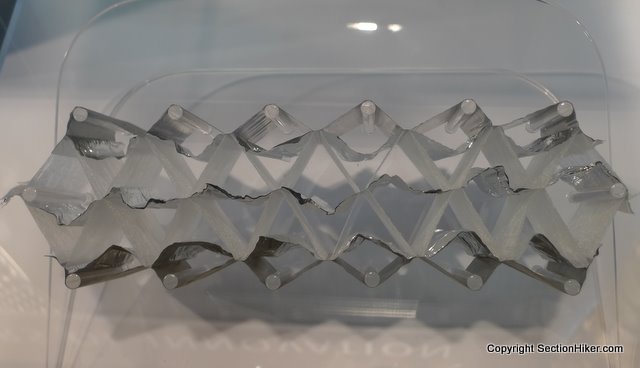
The Therm-a-Rest NeoAir XTherm NXT is designed to trap your body heat and reflect it back at you when you sleep at night. Unlike sleeping pads containing down or synthetic insulation, the XTherm NXT achieves this using a honeycombed construction of air baffles that are covered with a reflective metallic coating. The result is a very thin and lightweight air mattress that rolls up to the size of a Nalgene bottle, making it very easy to pack. The same honeycombed baffles are used in all of the NeoAir pads that Therm-a-Rest makes, although it gives NeoAir pads a crinkly potato-chip-like sound that many people find disturbing at night. More on this, below.
Valve and Pumpsack
The XTherm NXT uses a WingLock valve, first introduced in 2020, which lets you rapidly deflate the pad, inflate it by mouth or with the included pump sack. The pump sack is worth using in winter to avoid blowing moisture into the pad by mouth that will freeze in the valve or insulation chambers overnight. The pump sack, which is basically a large stuff sack with a valve at one end, can also double as a protective stuff sack for the sleeping pad.

What’s New in the XTherm NXT?
The NeoAir XTherm NXT is thicker, warmer, and quieter than its predecessor, the NeoAir XTherm inflatable sleeping pad.
Thickness
Thicker inflatable sleeping pads have become increasingly popular in recent years because they’re much more comfortable to sleep on. While increasing the XTherm NXT to 3″ thick from 2.5″ provides a slight improvement in comfort, I think the main reason Therm-a-Rest increased the pad’s thickness was for competitive reasons. The best inflatable sleeping pads available today are at least 3″ thick, with some as thick as 4″ like the Sea-to-Summit Etherlight XT Sleeping Pad. However, if you already own an old 2.5″ XTherm sleeping pad, it’s pretty difficult to notice any significant improvement in comfort and I wouldn’t upgrade based on this reason alone.
Despite being 3″ thick, the XTherm NXT isn’t as comfortable as pads that have vertical baffles or ones that are shaped more like bed springs and conform to your body. The XTherm NXT isn’t terrible, but it’s not the most comfortable pad. However, you can make the XTherm NXT more comfortable by letting some air out of it, although this will reduce its insulation value somewhat.
R-Value
While the R-value of the XTherm NXT increased from 6.9 to 7.3, again, that’s not a good enough reason in my opinion to upgrade to the XTherm NXT if you already own an older XTherm. Anything over an R-value of 6 is already going to be overkill in terms of insulation performance in winter in the lower 48. To be honest, I suspect the R-value increase in the XTherm NXT is tied to the increase in pad height, rather than being a deliberate improvement. The increase in air volume probably makes the pad warmer.
Quieter
The NeoAir XTherm NXT incorporates the same ThermaCapture technology that the new NeoAir XLite NXT pad uses making both pads quieter than previously. Having slept on the NXT, I concur. It is noticeably quieter when you’re lying on top of a fully inflated NXT. But the pad is still incredibly loud, like smashing potato chips, when you’re in the process of inflating it or rolling it up to pack it away. If you try doing these in an Appalachian Trail lean-to early in the morning or when you arrive after dark, you’ll probably get shot. Until the noise of inflation, deflation, and packing is reduced, I can’t see a strong rationale for upgrading from an old XTherm on the basis of sound reduction, although your tent partner might beg to differ.
Many people don’t care that much about the noisiness of the NeoAir sleeping pads, myself included because I usually camp far enough from other people that they’re unaffected by my sleeping pad sounds. I’m also usually so tired that the noise of the pad won’t wake me.

NeoAir XTherm NXT Max
The NeoAir XTherm NXT reviewed above is only available in a tapered mummy shape. If you prefer a rectangular-shaped sleeping pad, there is one called the NeoAir XTherm NXT Max, which has the same R-value (7.3) as the mummy version. The XTherm NXT Max is available in two sizes, a regular (72″ x 25″) and a long (77″ x 25″). Both are also 3″ thick.
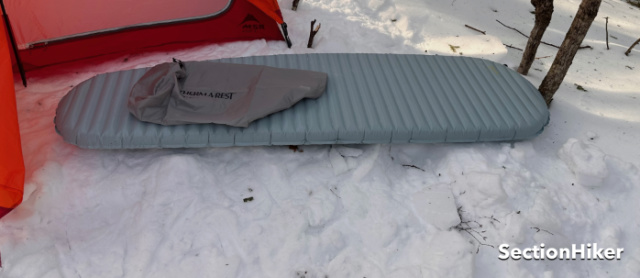
Recommendation
The Therm-a-Rest XTherm NXT Sleeping Pad is still a reliable, durable, lightweight, and high-R-value sleeping pad good for cold weather use even though the improvements to the new model are a bit underwhelming. If you’re a cold sleeper or you want a more durable pad for higher-risk winter use, the XTherm NXT Sleeping Pad still provides a lot of value. It’s just not as competitive as it used to be in terms of weight, comfort, packability, and ease of use. If you are looking for a good deal on a winter sleeping pad, this is a good time to pick up an older model XTherm at a significant discount.
Disclosure: Therm-a-Rest donated a sleeping pad for this review.
Compare 6 Prices
-

 Amazon US
Amazon US$269.95$231.78ViewAmazon.com Price: $231.78 (as of 04/24/2024 12:26 GMT-0400) Details
Product prices and availability are accurate as of the date/time indicated and are subject to change. Any price and availability information displayed on Amazon.com at the time of purchase will apply to the purchase of this product.
-

 Hyperlite Mountain Gear$239.95View
Hyperlite Mountain Gear$239.95View -
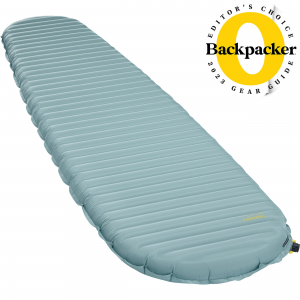
 Therm-a-Rest$239.95View
Therm-a-Rest$239.95View -
 REI$239.95View
REI$239.95View -

 Eastern Mountain Sports$239.95View
Eastern Mountain Sports$239.95View -
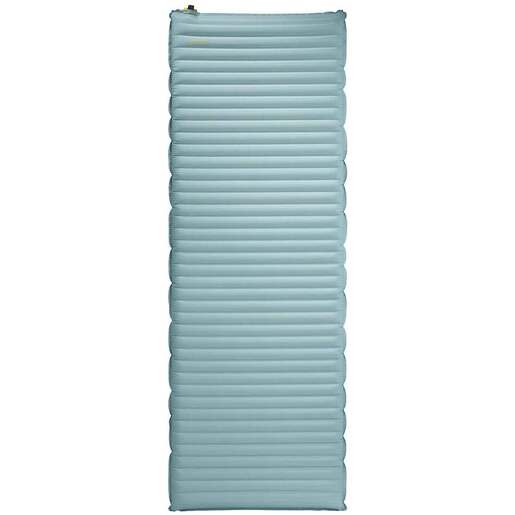
 Sportsman's Warehouse$269.95View
Sportsman's Warehouse$269.95View -
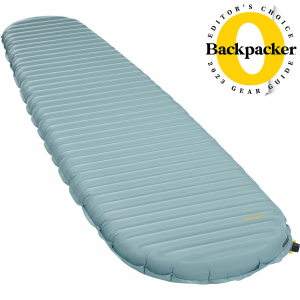
 Therm-a-Rest$269.95View
Therm-a-Rest$269.95View
 SectionHiker.com Backpacking Gear Reviews and FAQs
SectionHiker.com Backpacking Gear Reviews and FAQs 

Ever tried it in your hammock, Philip? If so, do you think Xtherm is overkill for 3-season hammocking in WMNF? Would the new NeoAir Xlite be more than enough?
I have accumulate several REI gift cards and thinking I’ll splurge on a nice insulated pad, regular wide. The cost between Xlite and Xtherm is so minimal, I would hate to get the Xlite and wish I had the Xtherm, where I don’t like I’d mind the extra 4 oz much.
I’ve been using a 40 deg Apex underquilt during my WMNF summer trips, but I’ve been taking an extra cheap pad (inflatable or CCF) too, so total weight has been over 20 oz anyway. I don’t mind having a pad in my hammock, but it can be tricky to get a 20″ one to stay in place on the diagonal. I plan to use it primarily for hammocking but might sleep in a shelter occasionally. I don’t think I’ll start winter backpacking anytime soon, but I’d like to do more shoulder season WMNF trips. I read some old threads saying the Xtherm is nice for hammocking because it still insulates really well when partially inflated, whereas the Xlite not fully inflated doesn’t insulate much.
Given there’s so little weight difference since you’re going to underinflate it which reduces its R-value, I’d go with the Xtherm for hammock use. I haven’t used an inflatable pad in a hammock in a long time. I mainly use a foam pad or an underquilt.
The Thermarest corporate video says to gently fill the pump sack by blowing in it. So if I use the pump sack or blow directly into the inlet valve it seems both methods fill the pad with wet air.
They treat the inside of the pad with a fungicide, so no harm will come to the inside if you have bad breath.
You only have to blow a little into the pump sack to help get the surrounding air to flow in and fill up the sack. So while you do get some of your moist breath into the pad using the sack, it’s much less than blowing directly into the pad.